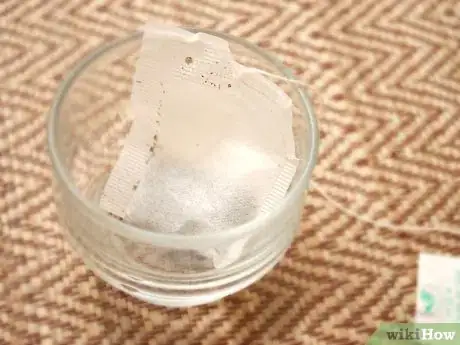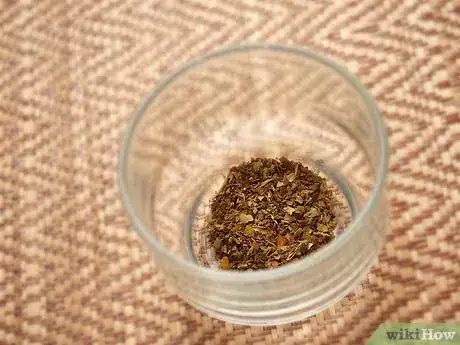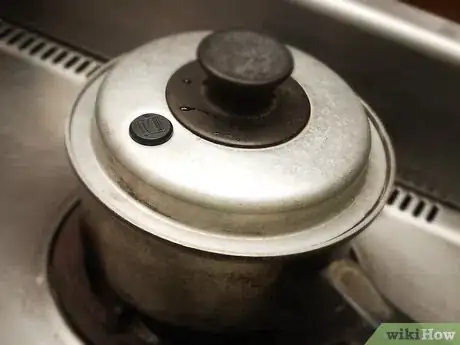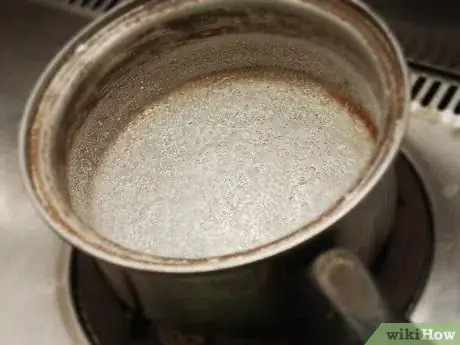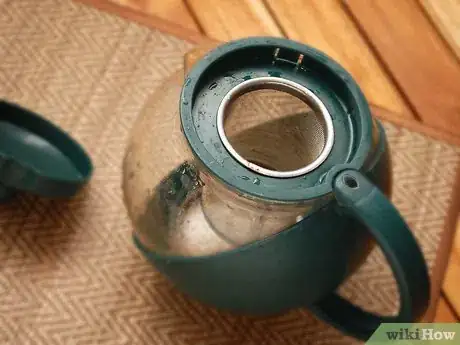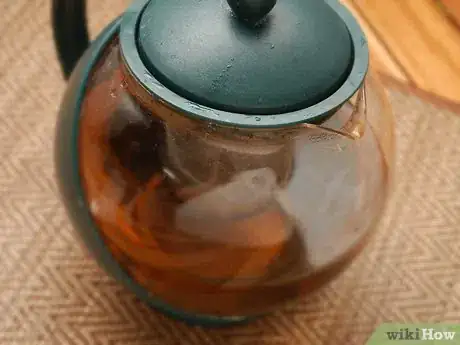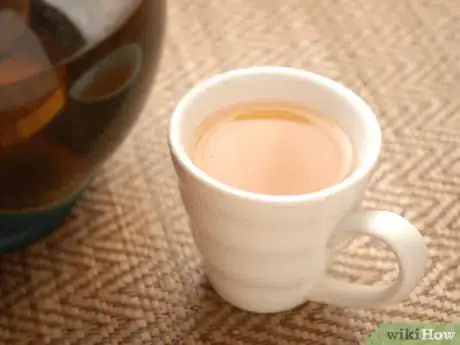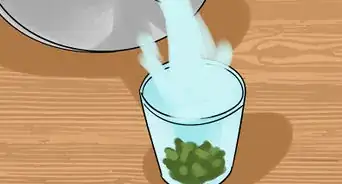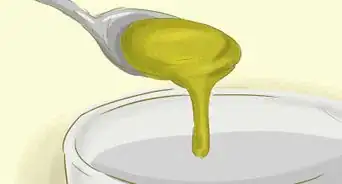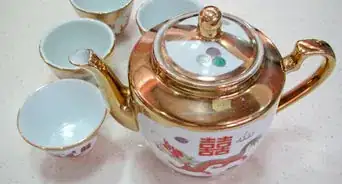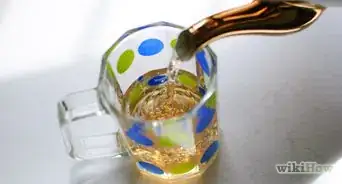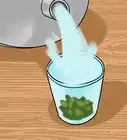wikiHow is a “wiki,” similar to Wikipedia, which means that many of our articles are co-written by multiple authors. To create this article, 18 people, some anonymous, worked to edit and improve it over time.
This article has been viewed 207,581 times.
Learn more...
White tea is a mild, sweet and fresh tea, that comes from a very healthy and rarer variety of the same plant as green tea (Camellia sinensis). It is produced mainly in the Fujian province of China and only consists of the most tender leaf buds that are covered in silvery, down-covered hairs.[1] These leaves can only be picked during 3 days of every year in early spring.
Containing up to three times as many antioxidants as green tea, this least-processed tea is the healthiest tea of all teas.[2] It has a mild and sweet flavor that is velvet-like in smoothness, and has none of the grass-like flavors some green teas can produce. Follow the steps below to make sure your white tea retains all its fine qualities while brewing.
Steps
-
1Purchase your white tea. White tea is far more expensive than any other tea, so it's not likely you'll be consuming it daily but the price is worth it for weekend treats or other special occasions. Considering that you're spending a lot though, it's important to ensure that you're getting the best quality possible.
- White tea has two versions: a traditional budget white tea (Fujian Silver Needle, Anhui, etc.) and a modern new style leaf white tea. They are not interchangeable and appear very different.[3]
- White tea comes in several varieties, and they can differ significantly in price. Silver tip, jasmine silver tips, pai mu tan (white peony) and silver needle are the best varieties,[4] and they are often also the most popular. You may even need to place an order with your local tea store to ensure that you get a supply each spring.
- If you're new to white tea, a good way to start is to buy a sampler kit from an online vendor. That way, you can try small amounts of several varieties to find your favorites.
- White tea can be bought as loose leaves or as teabags. However, if the container is opaque and if there is a lack of labeling, be careful as you might get leaf when all you wanted was buds, etc.
- Be sure to shop around to get the best deal possible. Since white tea is still relatively scarce, shopping online may be your best option.
-
2Be absolutely certain your white tea purchase is fresh. Ask the vendor to ensure that you're buying the most recent harvest, from the most recent northern hemisphere spring.
- Make sure that the tea you buy is packed in as airtight a container as possible. Keep it dry, cool and dark to prevent oxidation. White tea doesn't keep for years like black tea does; it must be consumed within six months of purchase.
Advertisement -
3Select the water. Choose good quality water. If you live in an area with hard water, filter it before you use it to brew. Hard water may ruin white tea, which has very delicate flavors.
-
4Heat water to boiling, then let it cool for five to eight minutes. Alternatively, only boil the water to "first boil". This is when the water begins to boil but has not yet begin to simmer. The temperature at this stage will be 160ºF (71ºC). Bitter brews come from too high a temperature of water on green tea; prefer a longer steeping time at a cooler temperature instead.
-
5
-
6Select your method for brewing the white tea. Use a tea infuser basket, a tea ball, or a teapot.
-
7Add two teaspoons of white tea leaves per cup.[7] Place the tea leaves into the infuser basket, tea ball, or teapot.
-
8Steep. White tea leaves can withstand longer infusion times than other tea types before pouring. It is usual to steep for 7 to 10 minutes.[8] However, you may wish to experiment with a short steep initially (1 to 3 minutes) and then to graduate to longer steeping times, to find the steeping length you prefer.
-
9Serve. White tea should be served as it is, unadulterated. You may choose to pour milk or sugar in the white tea, but the already subtle flavor of the tea will be drowned out.
-
10Finished.
Community Q&A
-
QuestionCan I reuse the tea leaves after a single brewing?
 Community AnswerYes, but your tea will be weaker with used leaves.
Community AnswerYes, but your tea will be weaker with used leaves. -
QuestionWhat does "only boil the water to 'first boil'. This is when the water begins to boil but has not yet begin to simmer" mean?
 Community AnswerWhen you can see bubbles rising from the bottom of the water up and breaking the surface, but you don't see the surface of the water moving much from the heat yet.
Community AnswerWhen you can see bubbles rising from the bottom of the water up and breaking the surface, but you don't see the surface of the water moving much from the heat yet. -
QuestionCan I add sugar to white tea?
 Community AnswerAs with any tea, you can add whatever you would like it to taste like. Sugar would be fine.
Community AnswerAs with any tea, you can add whatever you would like it to taste like. Sugar would be fine.
Warnings
- Do not pour boiling water onto white loose leaf tea. Doing so will scald and damage the leaves. White tea leaves are among the most delicate types of tea.⧼thumbs_response⧽
Things You'll Need
- Loose leaf white tea (two teaspoons per cup)
- Water - filtered if possible
- A kettle
- Cups
- A strainer
- A clock to determine steeping time
References
- ↑ t leaf, White Tea, Information sheet
- ↑ Selene Yeager, The Doctors Book of Food Remedies, p. 620, (2007), ISBN 1-59486-753-4
- ↑ Mary Lou Heiss and Robert J. Heiss, The Story of Tea, p. 73, (2007), ISBN 978-1-58008-745-2
- ↑ t leaf, White Tea, Information sheet
- ↑ t leaf, White Tea, Information sheet
- ↑ Mary Lou Heiss and Robert J. Heiss, The Story of Tea, p. 285, (2007), ISBN 978-1-58008-745-2
- ↑ t leaf, White Tea, Information sheet
- ↑ t leaf, White Tea, Information sheet
- ↑ Mary Lou Heiss and Robert J. Heiss, The Story of Tea, p. 288, (2007), ISBN 978-1-58008-745-2
About This Article
To brew white tea, heat 1 cup of water to a boil, then let it cool for 5-8 minutes. Place 2 tsp of white tea leaves into an infuser basket, tea ball, or teapot, then pour the hot water over the tea. Steep the tea for about 7-10 minutes, then strain it and pour it into a teacup. Since white tea has such a subtle flavor, it’s typically served plain, but you can add milk or sugar if you prefer. Read on to learn when to use filtered water for your tea!
